
In this review we put the Loxia 2.4/25 to the test and see if it performs as well as we expect from a $1299 Zeiss lens.
Samples Images




Many sample images in full resolution can be found in my Loxia 2.4/25 flickr album.
Changelog
- Update 1 (27.03.): New sample images, Bokeh, Flare, Sunstars, CA
- Update 2 (02.04.): New sample images, conclusion
- Update 3 (19.04.): Distortion, field curvature, laCA
Specifications
| Diameter | 62 mm |
| Length | 74.5 mm |
| Filter Diameter | 52 mm |
| Weight | 393 g |
| Max. Magnification | 1:6.4 |
| Close Focusing Distance from the sensor | 25 cm |
| Number of aperture blades | 10 (straight) |
| Elements/ Groups | 10 / 8 |
More information in Zeiss’ official pdf.
Price: 1299€ / $1299, you can get the lens via one of our affiliate links amazon.com | amazon.de | B&H | ebay.com | ebay.de
Disclosure
This copy was loaned to us from Zeiss free of charge for a few weeks.
Build Quality
By now we know what to expect from Zeiss Loxia lenses which are very consistent as far as build quality is concerned: The Loxia 2.4/25 is build almost entirely from metal and glass and feels very solid.
It comes with a medium sized hood which is also made from metal and which locks firmly.
Most anything is made from metal and tightly assembled. This includes the inner barrel. So unlike Sony’s FE lenses this lens is metal on the inside as well.
Unlike all Sony FE lenses the lens does have a rubber gasket around the mount. Zeiss doesn’t claim any weather resistance but I would feel more confident about this lens than most Sony FE lens in bad weather conditions.
All markings are engraved and filled with paint.
Handling

The Loxia is one of the smaller FE lenses. It is a little larger than the FE 2/28 but significantly more dense.
Handling on the Sony a7II is superb, the lens has just the right size and weight.
The focusing ring turns about 70 degrees from 25 cm to 1,0 m and a further 20 degrees to infinity. The focusing ring feels very smooth and it is a bit textured. I wouldn’t know how to improve it, using it is a joy. The lens has a hard infinity stop but as usual with modern lenses it focuses a little behind infinity.
The aperture ring is a bit close to the mount and not elevated, I had to get used to that because it is a bit tricky to tell were it begins and ends. It stops down in 1/3 stops from f/2.4 to f/22. Every click is well felt and the resistance is high enough so that you don’t accidentally change the aperture.
There are almost no non moving parts to grab to mount or unmount the lens, if this is something that may bother you have a look at the Loxia Lens-Grip from PocketPano.

Features
You can de-click the aperture with a special tool which apparently is a feature important to videographers.
The lens will provide exif information to the camera. You have to use the aperture ring though and there is no way to get automatic aperture control.
The lens reports to the camera when you turn the focus ring. So you can use the automatic magnification feature of the a7 series which will magnify the image the moment the focus ring is turned. Some people found it very useful, I prefer to magnify manually.
Image Quality
Bokeh
Bokeh is probably not the most important aspect of a 25mm lens but thanks to a short focusing distance of 25 cm you can get a decent amount of blur. Wideangle lenses often struggle in this regard. Not so the Loxia 2.4/25 which delivers an excellent performance with very smooth blur discs and an attractive transition zone. Only slight oof color fringing which is visible wide open could be a small detractor to some.
Because of the straight aperture blades blur discs take on a decagonal shape from f/2.8 but that isn’t too distracting.
Scenario 2: Close distance
Scenario 3: MFD with a lower contrast background

Flare and Sunstars
Zeiss has always been known for high contrast lenses and excellent flare suppression. The Loxia 2.4/25 is no exception in that regard.
So far this is the worst ghost I have seen in the real world:

Veiling flare is corrected really well:
Even heavily lifted shadows show no signs of veiling flare:
processed/unprocessedChromatic Aberrations
At f/2.4 axial CA can be an issue in demanding scenarios (100% crops):
One thing I wouldn’t have expected is that even at f/4 the Loxia 2.4/25 has rather strong axial CA off center:

Lateral CA is corrected really well. There is usually a forced correction, but here you can find an uncorrected 100% crop from the extreme corner which still looks really good:
Sony A7rII | Zeiss Loxia 25 2.4 | f/8.0 | uncorrected CA (before) / corrected CA (after)
Vignetting

- f/2.4: 2.3 stops
- f/4: 1.7 stops
- f/5.6: 1.5 stops
These are average values for such a compact wide angle but none the less they will affect (sometimes in a positive, other times in a negative way) how your images look. Here for example vignetting is visible but I felt it added to the image:

One interesting aspect: Zeiss specifies significantly lower values of 1.4 stops wide open and about 1 stop at f/5.6 in their official PDF. I guess they might be true for corrected JPGs and I think Zeiss should also publish the actual figure.
Distortion
Sony A7rII | Zeiss Loxia 25 2.4 | f/8.0 | uncorrected distortion (before) / corrected distortion (after)
The Loxia 25mm 2.4 has a slightly wavy distortion but a little less than the Loxia 21mm 2.8. With the last update there has been a profile added to Lightroom to easily correct it.
Sharpness

Wide open results are very good but stopping down to f/2.8 improves midframe performance notably and the corners improve from very good to excellent when the Loxia is stopped down to f/4. An excellent performance.
Just like the 21mm 2.8 this Loxia also shows some field curvature:
Still, by stopping down to f/4.0 you can get very even across frame performance.
We will soon publish our comparison between Loxia 21mm 2.8 and Loxia 25mm 2.4 which will feature tests on 42mp.
Coma
100% crops from corner, A7rII
Stars are way less demanding than cityscapes:
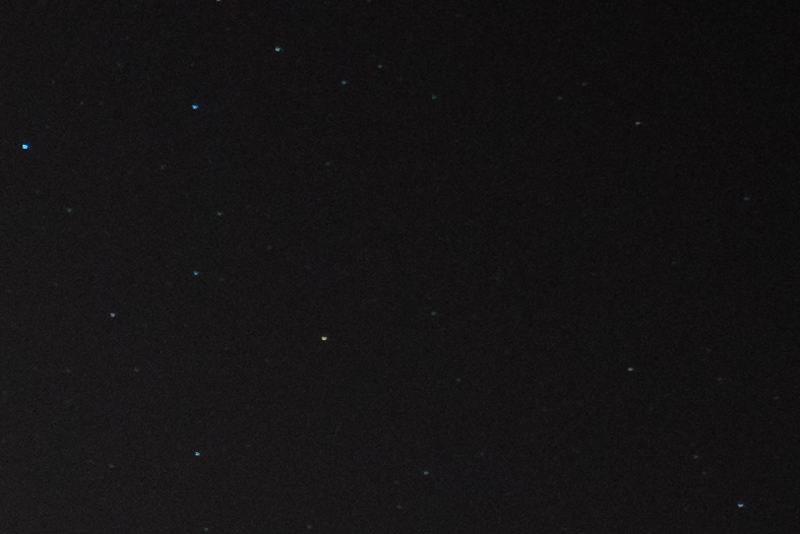
Similar to the Loxia 21mm 2.8 the 25mm 2.4 shows a very good performance. Because of the combination of maxmium aperture and speed (and vignetting) it wouldn’t be my first choice for shooting the stars but it is nevertheless possible and better than many other lenses especially legacy glass and slower zoom lenses.
Alternatives
Sony FE 4/16-35: The Sony is a very good but not a great performer so the Loxia beats it in almost every category: It offers sharper corners, better flare resistance, smoother bokeh, better defined sunstars, superior build quality and is 100g lighter. But of course it neither zooms nor does it offer AF which will be more important for many.
Phillip’s review | 518g | $1348
Sony FE 2/28: It is actually a little wider than 28 mm so both lenses offer a rather similar field of view. The Sony weights half as much, is half a stop faster and costs a third of the Zeiss. So it is hardly surprising, that it is significantly softer off-center with lower contrast, needs to be corrected for distortion and also shows a lot more CA. I would recommend the Sony to most users who get started in the system since it is a good compromise but if you are really serious about image quality the Loxia is clearly the better choice.
Phillip’s review | 200g | $448
Batis 2/25: More info to come
David’s review | 335g | $1229
Loxia 2.8/21: We are currently preparing a big comparsion between these lenses, so check back soon!
Jannik’s review | 394g | $1499
Conclusion
good
|
average
|
not good
|
Phillip’s Conclusion

As far as handling is concerned, the Loxia 2.4/25 is an excellent lens. It is smallish and not very heavy with very good build and handling if you forget about the at times annoying aperture ring.
Optically the Zeiss Loxia 2.4/25 is one of the finest wideangle lenses you can buy in any mount. It is an excellent choice for landscape photography where not only the sharpness but also the contrast, flare resistance and sunstars put it ahead of many other excellent lenses. The only aberration which is less well corrected is axial CA which I had to manually correct in a few of my images at wider apertures.
Personally I enjoyed using it more than any other wideangle so far and am certain that I want a Loxia for my landscape photography. The big question for me is: “Should I get the Loxia 2.8/21 or the 2.4/25?”. Both handle nearly identically and perform on a very high level. The Loxia 2.8/21 is slightly cheaper if I buy a used copy and it is quite a better corrected for axial CA. I think it would work slightly better for my landscape photography, because it is wider. The Loxia 2.4/25 has about a one stop advantage over the 2.8/21 when it comes to isolating objects and I used that potential quite a bit more than I would have anticipated and the superior bokeh is one reason for that. At times I had to manually correct axial CA in such but right now I think such annoyance weight less heavy for me than the better bokeh. I think it works better for the more intimate l so often shoot and I also enjoyed using it as a reportage lens.
So right now I lean towards the Loxia 2.4/25 but I will wait for Bastian’s conclusion before making a final decision. The next update will come from Bastian to whom I will send the lens tomorrow.
Bastian’s Conclusion

Unlike Phillip I alreay own the Loxia 21mm 2.8 – which is also probably my most used lens – so I wasn’t too curious about the 25mm 2.4 in the first place.
I also think for general landscape and architecture 21mm is preferable to 25mm, but this comes down to personal taste of course.
Nevertheless, I spent quite some time over the last two weeks shooting both Loxias side by side (comparison will be published soon).
By just having a look at Zeiss’ MTFs I expected the 25mm to be an even better performer than the 21mm,but this is one of those examples where the MTFs are not telling the whole story:
The correction of longitudinal CA is definetly worse than I had expected and not just at f/2.4, but still stopped down.
This is also the aberration I dislike the most because it is quite hard to correct properly in post.
Wide open I also think the 21mm lens is the better performer, as I will show soon in a big comparison between these two lenses.
Phillip did enjoy the ability to throw the background slightly out of focus, which I can understand, as I have already been there with Nikon’s AF-S 24mm 1.4G and the AF-S 20mm 1.8G as well.
But in the end f/2.4 does not really cut it for me when it comes to wide angle bokeh in a 24/25mm lens.
I would rather adapt a Nikon AF-S 24mm 1.8G – which has even smoother bokeh and at shared apertures
is not plagued by loCA as badly – or wait what the rumored GM 24mm 1.4 will be like (which is what I am actually doing).
So as an owner of the Loxia 21mm 2.8 I will pass. This does not mean we are dealing with a bad lens, it probably is one of the best for the system, just not as good as the 21mm in my eyes.
Price: 1299€ / $1299, you can get the lens via one of our affiliate links amazon.com | amazon.de | B&H | ebay.com | ebay.de
More sample images
Many sample images in full resolution can be found in my Loxia 2.4/25 flickr album.



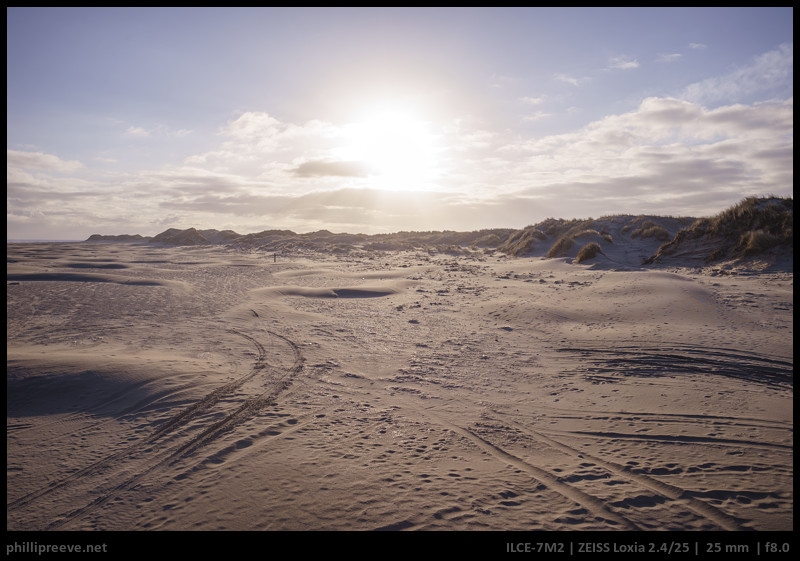
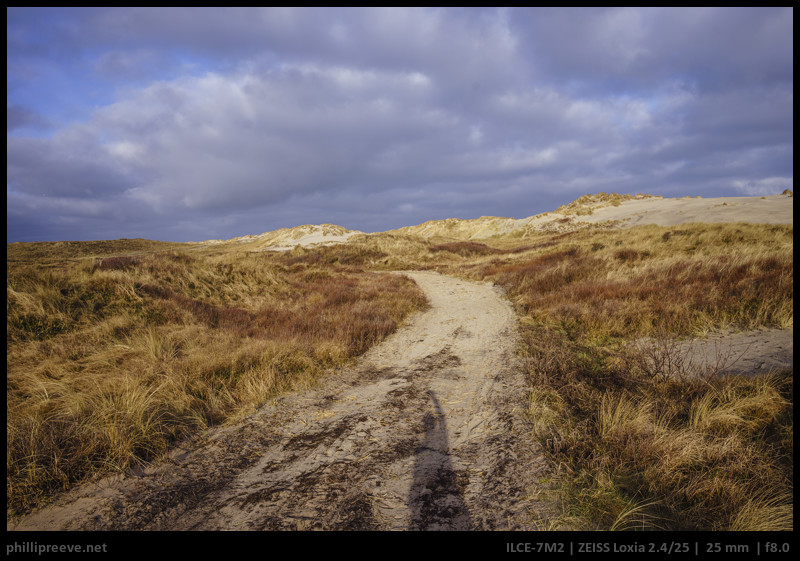


Other Articles
- Our honest guide to FE lenses
- Overview: Lens Reviews
- User-Guide to wide-angle lenses for Sony a7 a7II a7rII
This site contains affiliate links. If you make a purchase using any of the links marked as affiliate links, I may receive a small commission at no additional cost to you. This helps support the creation of future content.
The Team
Latest posts by The Team (see all)
- Sony FE Lenses: The honest Guide for the A7/A9/A1 Series - March 18, 2025
- Guide to best Sony E-Mount 35mm Lenses for A7/A9/A1 series - March 8, 2025
- Guide to the best Portrait Lenses – Sony A7/A9/A1 series - February 22, 2025

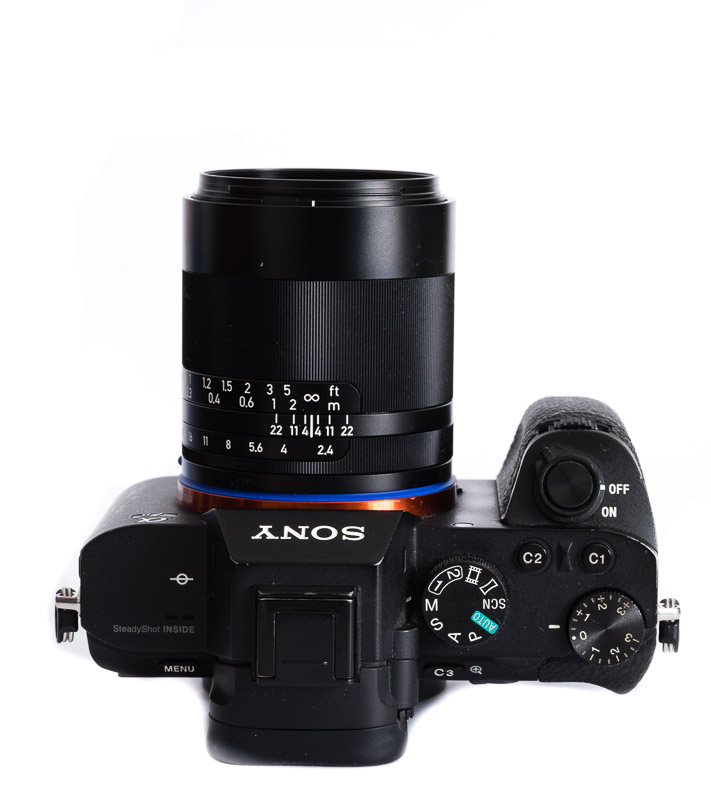
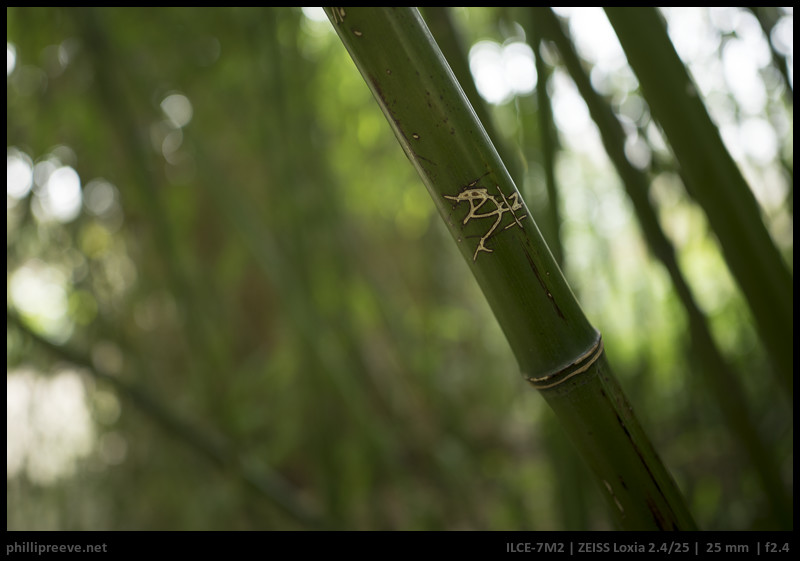










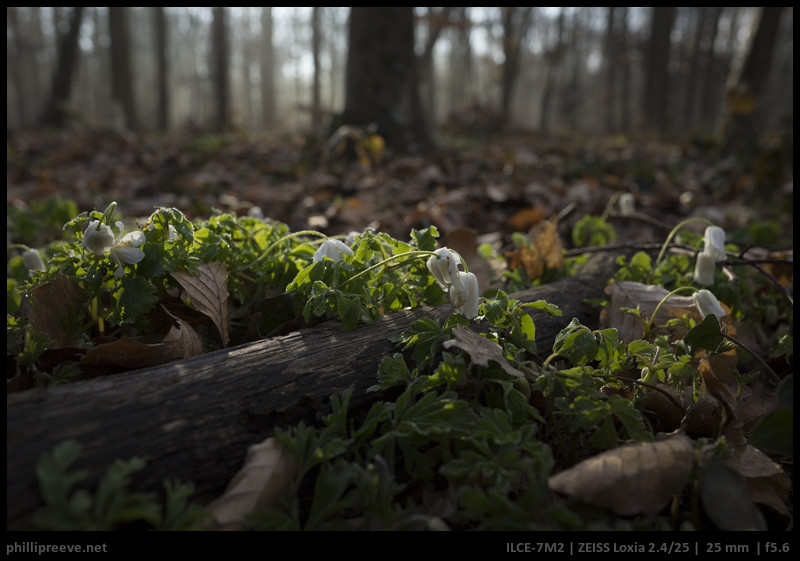





















Hi Philip and Bastian, slightly out of context for this article, but are you planning to check out the new e mount 35/1.4 from voigtlander? I’ve been holding of 1.2 for that as that is much smaller and probably bright enough. It would be even great if you do a comparison between the two. Thanks. I’m currently using a small samyang 35/2.8 which is great.
Bastian got his copy today 🙂
I have not taken many shots with it yet, but unless you are after that “old school” rendering I think there are better lenses around (Voigtlander 35mm 1.7 + 5m PCX filter, Voigtlander 40mm 1.2).
That’s good to know. Looking forward to the full review.
Get the Nokton 35/1.2. Stay away from the 35/1.4 even if you like old-style subpar rendering (which you can get adapting a much cheaper used lens).
It looks very promising, but I hope I will be able to make a pass on this one, as I already own the 21, 35 and 50. I rather save and get the 85 (and perhaps sell the 50, which I found the most bland of them all).
If I could wish, the next one would be a 180/4 but that will probably never happen 🙂
Yeah, I am a bit confused by this choice of releasing a 25mm Loxia. I don’t really have a need for it. I have both the 35 and 21 and frankly, I would have preferred & definitely bought a wider than 21.
But it does look really nice 😀
Thanks for the review!
@colinsurprenant
I am afraid that all CA examples shown above (as of 26-Mar-2018) are of the Longitudinal type, and quite bad for a lens of that price.
Gracias por la revisión!
Yo amo usar lentes manuales, entre los que tengo es el loxia 35/2 y el Voigtlaender 10mm/5.6, y hasta enero de este año estaba ahorrando para comprar el Loxia 21/2.8, pero cuando salió en preventa el 25 lo compré y quizá la siguiente semana llegue mi copia, preferí el 25 porque el 10mm es demasiado abierto y me he dado cuenta que por lo mismo lo uso poco (grandioso cuando lo necesitas! pero eso sucede pocas veces) y me dio miedo que con el 21mm me pasara lo mismo.
Mi pregunta es, habrá en realidad suficiente diferencia entre el 21 y el 25 como para comprar ambos? osea finalmente ambos son Distagon, no son verdaderamente diferentes en rapidez, parecen casi hermanos gemelos, y me da la impresión que caminar un paso atrás o adelante me pondría en el encuadre del otro!
Que opinan?
I’m sorry none of the team here can read Spanish. Our readers have at least a dozen different native languages, so we need to find something that we can all understand. For most of our readers that will be English, though German will work for many as well as most of the team come from Germany.
Are languages still a problem in 2018, with an Internet connection ?!
Google Translate is your friend 😉
To me it feels disrespectful if you ask someone a question in a language you know the other one doesn‘t speak. Sure with google translate or other tools I can make sense of it but you could use them to translate the question yourself and save us and everyone reading the comments some time.
desconocía que usted no habla español, cuando extrangeros vienen a mi país hablan su idioma de origen, y nosotros que estamos educados con hospitalidad, buscamos ayudarles, pero es una cuestión cultural, entiendo que no todo el mundo es igual.
I did not know that you do not speak Spanish, when foreigners come to my country they speak their language of origin, and we who are educated with hospitality, seek to help them, but it is a cultural issue, I understand that not everyone is the same.
Das ist vielleicht ein wenig hart formuliert.
Agree
The poster asks whether getting both the 25 and 21 will be worth, since they’re very similar focal lengths. However, he (she) also says that he have already bought the 25 instead of the 21 because he was afraid this last lens would be too wide…
No one can really answer that question for the poster. Some people have 21 and 25 in their lens cupboard. If you have lots of lenses and can afford it go ahead (I do, I admit somewhat embarrassedly). But if you have a three lens kit or even a five lens kit you wouldn’t want both.
That will depend on what you want to use it for. I can see that the 25 works quite a bit better for photographing trees or smaller objects in their environment because of the shallower DOF and excellent bokeh and the slightly less wide perspective while the 21 works better for classic landscape scenes with an emphasized foreground. If you ßshoot both and have the funds: why not.
But I guess that in the end most people will be happy enough with just one and for landscape and architecture the 21 should fit better in most kits.
Thank you very much for the contributions !, Although I am currently looking forward to the 25mm, I think I will finally end up doing 21mm too, it can not be ignored that every review I read, they conclude that it is a cool one. However sincerely I think that the difference of framing between the two is minimal, the page of Zeiss says that they are 10 degrees (81 ° / 71 ° / 50 ° in 25mm vs 91 ° / 81 ° / 59 in 21mm) that is to say 5 on each side, I think that stretching or shrinking the arms would fall in the frame of one lens or another … but as I live there is no way to rent lenses (even these lenses I must ask from abroad) I can not know until try it with my own hands, finally, between my Voigtlander 10mm, Loxia 35, Loxia 85mm I can only say one thing: one ends up falling in love with them. Again, thanks for the review.
In my opinion, it does not make sense to have both 21 and 25.
With the 21 you can crop the frame to 25 with little loss of resolution.
The half a stop difference (2.8 vs 2.4) is negligible, so I recommend investing your money in a different lens.
I agree, you don’t need both the Loxia 25 and 21 at all. One lens or the other will do what you need.
I would buy the 21 if you prefer medium / small aperture deep DOF landscapes in this focal length, and the 25 if you enjoy using bokeh in your landscapes of this focal length.
Estoy de acuerdo, no necesitas los Loxia 25 y 21 en absoluto. Una lente u otra hará lo que necesita.
Me gustaría comprar el 21 si prefieres paisajes DOF profundos de apertura media / pequeña en esta distancia focal, y el 25 si te gusta usar el bokeh en tus paisajes de esta distancia focal.
Hi. Thanks for the very swift review! I too believe the highlight purple fringes are results of longitudinal ca.
Seems most if not all of the loxia lenses exhibit CA wide open. Does anyone know if there is a specific trade-off when eliminating it? I assume Zeiss engineers must have a reason for not making it a high priority.
The 21 and 85 seem to show less axial CA and the 35 and 50 are just old designs.
This is speculation but allowing for some axial CA seems to smooth the bokeh and since it goes away as you stop down it is a less objectionable aberration.
The reason is simply cost. A true apochromatic lens requires expensive special glass and higher manufacturing cost.
Apochromatic correction does not make the bokeh worse.
Great lenses like most pro super-teles are apochromatic (or better) even if they don’t have “APO” in their marketing name. Nonetheless most of them render awesome bokeh.
That’s not a very convincing argument in my eyes since super-teles and normal or WA lenses are very different in design.
Perhaps the APO Summicron 50, or even the Otus 28 will be more convincing examples 🙂
That there are very well corrected lenses with decent bokeh doesn’t disprove that allowing for more LoCA can have a positive effect on Bokeh.
No need to disprove anything that has not been proven.
even if a comparison is kinda off. i wonder how it complares to the pretty decent Canon FD 24mm f2.8
I have owned the Canon FD 24mm f2.8 (breach lock) and own the Loxia 21. If the Loxia 25 is anywhere near the 21 in optical quality it’s considerably better than the Canon at larger apertures and contrast.
Hi! Would you kindly let me know if the focus ring on the Lox 21 is a little stiffer than usual? My copy certainly seems so, much stiffer than say, Lox 50.
Is that normal?
Thanks!
Do you mean Lox 21 or Lox 25? On this copy of the 25 it isn’t stiff at all.
Yes, I tried a few copies and the 21 is not as smooth as the 50mm or 35. It’s not stiff, but there’s more resistance on the 21.
Really? You know, one thing I noticed with my 50mm is that it is often pretty stiff when first using it. After you move it around a bit it loosens up. I don’t have that issue with any of my Voigtlander lenses- either new or old.
Other than the compact size I see no benefit of this lens over the Batis 25.
CA looks worse and the lens is almost 70g heavier than the batis version
Add to that the price is the same for a manual focus lens….with a focal length not to dissimilar to the highly regarded Loxia 21mm
I have the Batis, and I don’t think the CA on the Loxia is worse. The Batis can hacve very serious LoCA in some situations.
The reason for getting Loxia, if there is one, is that the MTF promises that a good copy may be noticeably sharper than Batis (which is itself no slouch) which mya matter for very large prints, and some peop,e will prefer the sunstars. For environmental portraits and people, pictures Batis is probably a better bet…
I have the Batis 25, which is great in contrast and rendition but it is not great for sunstars and flare resistance and sharpness is OK, not as good as the 21 Loxia. So I guess landscapes would be the only reason to own the Loxia over the Batis. Im staying with my 21 Loxia and 25 Batis.
I hereby solemnly swear to disregard the voices in the back of my head quietly whispering “Come to me, come to me. Your life will cease to have any meaning…”
can you compare the loxia 25 and batis 25?.
Not likely to happen since we don’t own one.
Here’s a comparison of the Loxia and Batis 25mm lenses:
http://www.fredmiranda.com/forum/topic/1545626/1
Great review as always. Thanks
Just a note, the F/8 link of first Bokeh pic (Bamboo) isn’t working…the picture disappears ;o)
Fixed, thanks.
Phillip, i think i like your more dof pictures (no blur) more. With a wide lens such as a 25, focussing very near and blurring the background could be a novelty which one gets fed up with later.
Congrats for another great review.
Great review, as always. Thank you.
I will eagerly await the announced comparison Loxia 21mm vs 25mm!
Kann einer von euch etwas zu den Unterschieden zwischen dem Sony 28/2 und dem Loxia 25 sagen? (das mit dem Fokus ist klar…)
Wie schlägt sich das Sony eurer Meinung nach im Vergleich zum Loxia? Was rechtfertigt ggf. den hohen Preisunterschied?
Ich denke die beiden sind von Brennweite und Offenblende relativ ähnlich, weshalb es doch legitim ist, diesen Vergleich aufzustellen… 🙂
Guck mal bei Alternatives 😉
Vielen Dank für den Hinweis Phillip – ich habe den Absatz zum Sony durchaus wahrgenommen, ich wollte nur noch ein bisschen mehr aus euch rausklettern 🙂
Gerade weil ihr schreibt, dass das Sony halb so schwer ist, lichtstärker ist und ein Drittel vom Loxia kostet, spricht ja eigentlich schon viel fürs Sony. Weniger Schärfe außerhalb der Bildmitte, weniger Kontrast, mehr CA‘s und mehr Verzerrung… ist es das, warum man für das Loxia das 3-fache bezahlt? Da ihr alle sehr angetan seit vom Loxia, müssen die Unterschiede schon ziemlich deutlich sein, dass es den 3-fachen Preis rechtfertigt…
PS: Ich möchte Euch allen mal ein ganz großes Kompliment, für zuverlässiges Antworten auf Kommentare, aussprechen! Nicht nur dass ihr überhaupt antwortet, sondern auch noch nach welch kurzen Zeit ihr das schafft – bei der Vielzahl an Kommentaren ist das wirklich sehr lobenswert! 🙂
*das sollte „rauskitzeln“ heißen
So viel mehr fällt mir zu den Unterscheiden nicht wirklich ein. Das Sony hat zweifelsfrei das deutlich bessere Preis/Leistungsverhältnis. Das Sony ist ein gutes Objektiv. Das Loxia setzt halt nochmal 10-20% drauf, die man teuer bezahlt. Wenn man das Ganze nicht zu ernst nimmt (wir neigen sicher dazu es zu ernst zu nehmen) und nicht regelmäßig sehr hochqualitative Drucke macht ist das Sony die deutlich vernünftigere Wahl.
Vielen Dank Phillip – die Antwort hilft mir weiter! 🙂 Auch wenn ich die Fotografie ernst nehme, werde ich mich wohl erst mal am Sony versuchen…
Ich fände es übrigens interessant zu wissen, wie Deine Antwort auf die von dir gestellte Frage (The big question for me is: “Should I get the Loxia 2.8/21 or the 2.4/25?”) ausgefallen ist/ausfallen wird. Welches der beiden ist es denn nun geworden, falls die Entscheidung schon gefallen ist? 🙂
Ist noch nicht gefallen 😉
Hi! Thanks for doing these great reviews. Have you compared any of the Loxia lenses to the Handevision Iberit? I’m curious because of the cost difference.. and them both being manual focus/with aperture rings + metal builds, seems a good comparison. Thank you!
We handled their lenses for a few minutes at Photokina 2016 and were surprised how bad they seemed to be upon first impression so we lost interest in them. Since then I haven’t read anything of substance about them which would have made me want to test them.
I personally prefer 25mm over 21mm for its more natural perspective and more intimate rendering. Of course, sometimes you want the dramatic perspective of an ultra-wide, which is why there really should be an 18mm Loxia. The choice then would 21mm or 18/25mm, which would surely make more sense.
Really focal length at a location closer to 28? Simply I wanted to replace its the Canon nFD 24 on Loxia 25.
You said above: “Loxia 2.8/21: We are currently preparing a big comparison between these lenses, so check back soon!”
That was April 2018. Its now Jan 2020 – have you posted this? I can’t seem to find it.
thanks
Shouldn’t be too hard to find:
Comparison: Loxia 21mm 2.8 vs Loxia 25mm 2.4
Thx!
hopefully my photography skills are better than my blog searching skills!!
Thanks for all the excellent review work you do. I am a recent fan of the Loxia lenses and have purchased 4 of them for (mostly) landscape work. Oh my. They are superb.
I have been wondering about the 25mm (the one I’m missing) but I’m not convinced of its value. Does it *really* fill a vital gap between the 21/2.8 and 35/2? Or is it more a ‘nice to have’ lens that get’s left in the lens-cabinet too often to be justified?
If you have 21 and 35 already I see no reason to get this 25.
danke schön
I have the loxia 21mm and 35mm and the 25mm ze adapted. The ze is amazing in center sharpness but large to use with adapter. Anyway the 25mm bokeh for portraits and for objects is very nice. Also the focal length of 25mm is more versatile than the 21mm. The 21mm is more distorted for portrait. The 25mm has more vignetting, sometimes nice for portraits but not good for landscape or infinity shots.
So for wide portrait, or scenes with a subject and background I prefer the 25mm. For landscape or dramatic shots the 21mm. For more “artistic” shoots the 25mm with the 3d effect and vignette it’s better choice. So the lens are close in focal length but the used are different for me.
The 25mm is more versatile with portraits and some city, forest shoots. And the 21mm is more for landscape and interior shoots.
Hey! Stopped down to about 5.6+ do you think that there are any serious advantages that this lens has over the Pentax 28mm f3.5? Have you noticed that this lens has a better tonal rendition perhaps? Does it make sense to compare them? Looking to possibly get this lens but I won’t bother if it doesn’t blow the Pentax out of the water! Thanks
I wouldn’t say that the Loxia blows the Pentax out of the water but it was actually the reason I sold the Pentax a couple of weeks ago.
-For me speed and electronic contacts were important arguments.
-While the Pentax’s flare resistance and contrast is incredible for the time and still decent for today, the Loxia has still better flare resistance and a little higher contrast.
– In general my experience is that with few exceptions it takes a few clicks to make two lenses have very similar color so that is hardly an issue for me.
-The Loxia is noticeably sharper at f/5.6. From f/8 you really need to enlarge a lot for it to be noticeable.
So all in all the Pentax offers significantly better value for landscape photography and the Loxia won’t make a huge difference so if you are on a tighter budget I wouldn’t upgrade. Personally my budget has increased quite a bit these days so when I found a Loxia 2.4/25 for 650€ I bought it and I do not regret that decision.
Thanks for the response Phillip! I appreciate it
I wonder if anyone has compared the Loxia 25 to the new Sigma 24/3.5 yet?